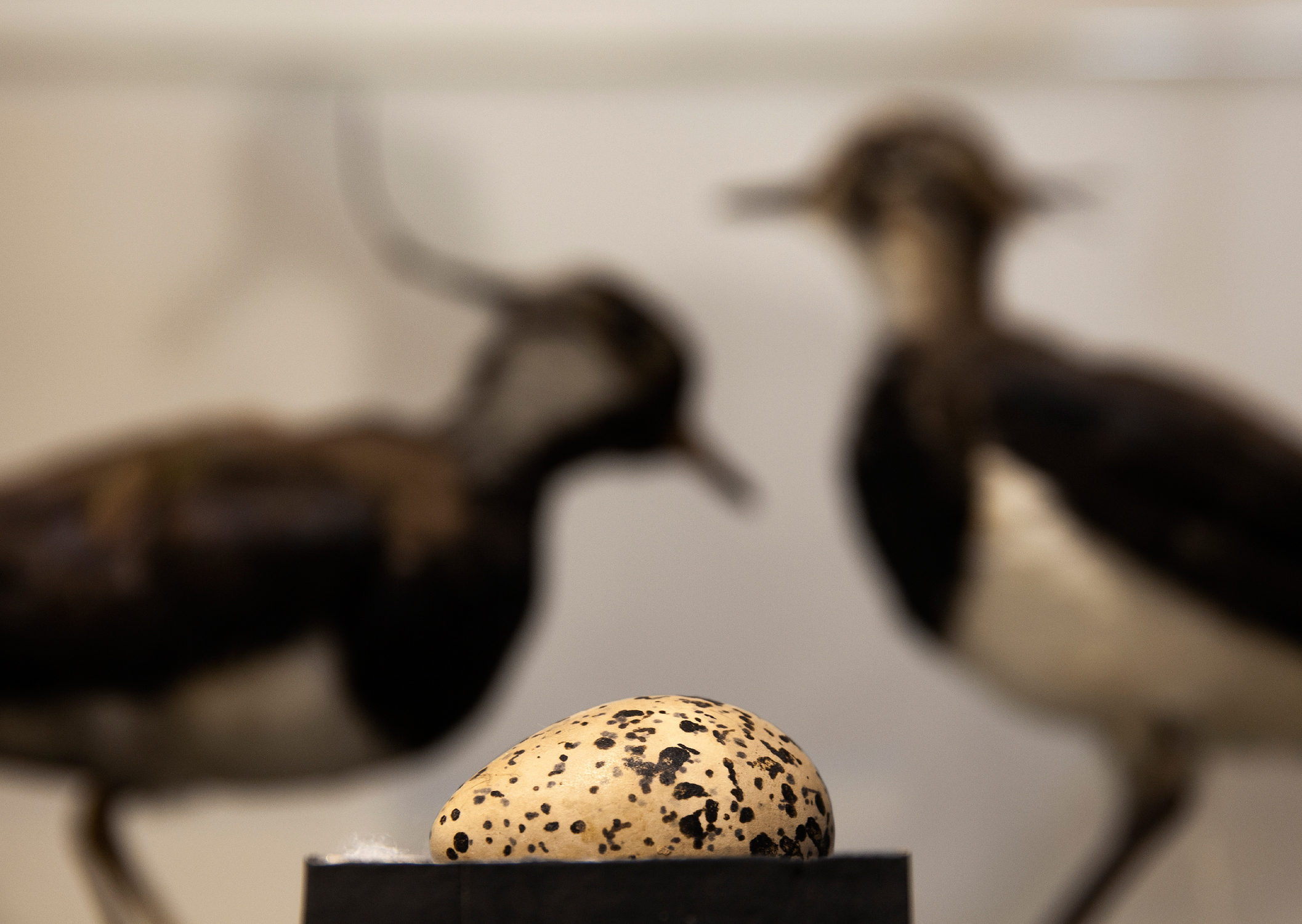Vilnius University Library continues the narration of decorated paper and invites to see the second part of the exhibition “Tales of Decorated Paper”, which presents the historic technique of paper decoration – sprinkling. So, what is behind the title A Swarm, Landed. Sprinkled Paper?

Bicolour sprinkled back endpapers. Taken from ‘SOWITA WINA…’ by Йосиф Велямин Рутський, Vilnius, 1621. Photo: R. Malaiška
Back in 1658, Dirck de Bray, a Flemish painter, gave some instructions on how to decorate paper in such a way: ...Take a stiff hair brush and rub it in the colour until the colour is in the brush; then you run your finger over the brush so that the colour is splashed onto the fore-edge; above all you must sprinkle evenly and, so that no colour is sprinkled between the leaves, you must place a board with something heavy on it on the book... As one can see, the instructions are not that challenging. No wonder that in terms of performance this technique is considered the easiest one and, due to its simplicity, is often overshadowed by other, more complex ways of paper decoration. Nevertheless, it is this technique that tells a lot about bookbinders’ imagination and taste demonstrated in decoration of their work products. The history of the sprinkled paper is closely related to nature and patterns that can be seen in it; the images seem are transferred on the surface of an object to be decorated.

Egg from the birds of Sandpiper family and northern lapwings in the background. Exhibits from the collection of Count Konstanty Tyzenhauz (1786–1853) in Vilnius university Museum of Zoology. Photo: VU Library
Quite often decorated paper imitates some material such as fabric, leather, rock or others. Brownish paper with black paint sprinkled on top can often be found in the collections of the 17th–18th century books. After taking a closer look and studying more about this way of decoration, you might be interested to learn that in the German language such paper is called Kiebitzpapier, that is, paper decorated in a peewit egg pattern. At the same time, a way of decorating leather called leather marbling became very popular in Europe. Ordinary vegetable-tanned leather of natural colour was sprinkled or otherwise decorated with dark paints.

Book covers decorated using sprinkling technique: leather and sprinkled paper cover (the smaller book) and marbled leather cover. Photo: R. Malaiška
While exploring the examples of sprinkled paper, take note of book edges that are decorated in this technique. It appears this was a clever trick on the bookbinders’ part – book edges, decorated thusly, helped to hide defects and were more appealing to the client's eye.
By visiting and reading this colourful story you will learn what other tricks were performed by decorators and get to know some unbelievable facts that are hiding behind this simple but, at the same time, playfully subtle and appealing decoration technique.
Digital exhibition “Tales of Decorated Paper” in Lithuanian and English languages has been launched on Google Arts and Culture. The second part “A Swarm, Landed. Sprinkled Paper” is available here.
Other stories:
A Pacing Woodblock. Block-printed Paper – on 15 September
A Ripple, Captured. Marbled Paper – on 28 September
A Soft Footprint. Paste Paper – on 5 October
A Golden Garden. Brocade Paper – on 12 October
2021-09-21
